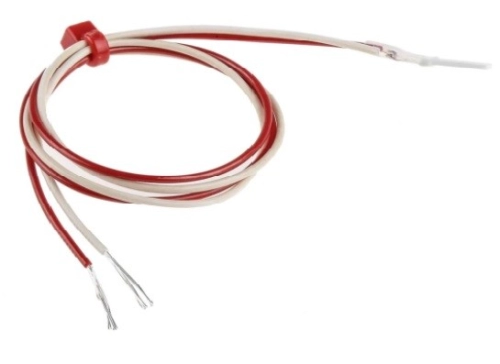362-9799 - RS PRO PT100 RTD Sensor, 2mm Dia, 10mm Long, 2 Wire, Chip, Class A
Product Details
RS Pro Thin Film Pt100 Platinum Resistance Temperature Detector
From RS Pro a high-quality and reliable Pt100 and Pt1000 PRT (Platinum Resistance Thermometer) or RTD (Resistance Temperature Detector). These temperature sensors have a thin film construction for accurate and reliable temperature measurement along with a fast response time to temperature changes. This design is also resistant to both vibration and shock. The flat design of these PRTs makes them ideal for measuring temperatures on surfaces
From RS Pro a range of high-quality and reliable Pt100 and Pt1000 precision platinum RTDs (Resistance Temperature Detector) also known as PRTs (platinum resistance thermometers) or PRT sensors. These Pt100 and Pt1000 temperature sensors have a thin film construction for accurate and reliable temperature measurement along with a fast response time to temperature changes. This design is also resistant to both vibration and shock. The flat design of these Pt100 and Pt1000 temperature sensors mean that they are ideal for measuring temperatures on surfaces
What is a Pt100/Pt1000 RTD?
An RTD is a type of temperature sensor based on the correlation between metals and temperature. As the temperature of a metal increases so does it's resistance to the flow of electricity. This resistance can be measured and converted to a temperature reading. ’Pt’ stands for platinum (platinum wire or film) and ’100’ means the temperature sensor has a resistance of 100 Ohm at 0°C and '1000' means it has a reistance of 1000 Ohm at 0°C. Platinum is the most reliable metal due to it's linear resistance to temperature relationship over a large temperature range.
What is a Thin Film RTD?
A thin film platinum RTD consists of a thin layer of platinum (usually 1 micron thick) on a ceramic substrate. This is then covered with a layer of epoxy or glass for protection against high voltages and to maintain a high insulation resistance. The thin layer of platinum results in the sensor having a high resistivity and fast response times to changes in temperature. Thin film RTD elements are sometimes incorporated into protective housings or other types of assembly allowing them to be used in harsh conditions
Accuracy Classes
The accuracy classes for the tolerances of these platinum resistance thermometers are defined in the IEC 60751 standard and are as follows:
Class A = ± (0.15°C + 0.2%)
Class B = ± (0.3°C + 0.5%)
1/3 DIN = ± (0.1°C + 0.5%)
1/10 DIN = ± (0.03°C + 0.5%)









